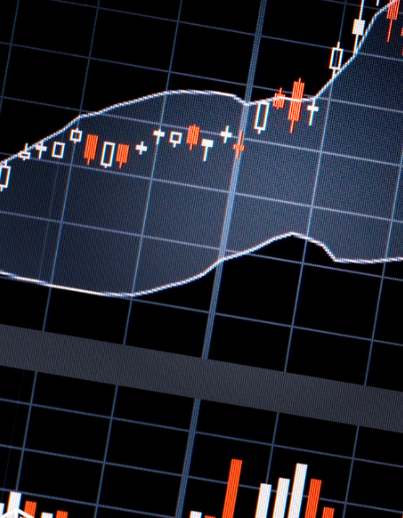A Comprehensive Guide to the Bid-Ask Spread in Trading

For anyone involved in financial trading, understanding key terms like the bid-ask spread is essential. The bid-ask spread plays a significant role in trading decisions as it directly affects potential profits. In simple terms, the bid-ask spread is the difference between the price at which you can buy and sell an asset, and knowing how it works can make a huge difference in your trading strategy.
What is the Bid and Ask?
Whenever you trade any financial asset, you will encounter two key prices: the bid price and the ask price. The ask price is the price at which you can buy an asset, while the bid price is the price at which you can sell it. The difference between these two prices is referred to as the bid-ask spread.
The current price, often known as the market value, is the price at which an asset was last bought or sold. This price is dynamic, constantly changing as buyers and sellers interact. The bid-ask spread is a direct reflection of this interaction, with supply and demand determining the prices at any given moment.
Understanding the Bid-Ask Spread
The bid-ask spread is essentially the difference between the highest price a buyer is willing to pay (the bid) and the lowest price a seller is willing to accept (the ask). This difference varies depending on the market’s liquidity, volatility, and time of day. The spread can be narrow in highly liquid markets, like large-cap stocks, or wider in illiquid markets.
The spread is a cost that traders have to consider, as it represents a transaction expense. For example, if the bid price for a stock is $50 and the ask price is $51, the spread is $1. This $1 is effectively a cost of entering or exiting a trade.
Why Does the Bid-Ask Spread Matter?
For long-term investors who buy and hold assets, the bid-ask spread may not be a significant concern. However, for short-term traders—such as scalpers, day traders, or swing traders—the bid-ask spread is crucial. These traders aim to profit from small price movements, and the spread can eat into their potential profits.
The wider the spread, the more the price must move in the trader’s favor to cover the cost of the spread. This is why liquidity is so important; more liquid markets tend to have smaller spreads, allowing traders to enter and exit positions more easily and at a better price.
Factors Affecting the Bid-Ask Spread
Several key factors influence the size of the bid-ask spread:
- Liquidity: Highly liquid assets, like large-cap stocks, have smaller spreads because there are more buyers and sellers actively participating. In contrast, illiquid assets or less-traded stocks may have larger spreads because fewer market participants are involved.
- Volatility: In volatile markets, the spread can widen due to increased uncertainty. Market makers adjust their bid-ask prices to account for the higher risk of price fluctuations.
- Market Time: Spreads tend to be narrower during market open and close, when trading activity is highest. During quieter periods, such as mid-day, spreads can widen as fewer trades occur.
- Asset Type: The bid-ask spread can also vary by asset type. Major stocks, commodities, and currencies typically have narrower spreads, while micro-cap stocks or niche markets often experience wider spreads.
How to Trade with the Bid-Ask Spread in Mind
Traders use various strategies to minimize the impact of the bid-ask spread on their profits. Here are some tips to consider when trading:
- Use Limit Orders: Instead of placing market orders, which execute immediately at the current bid or ask price, traders can use limit orders. A limit order allows you to set a specific price at which you want to buy or sell, ensuring you don’t overpay or undersell based on the spread.
- Watch for Slippage: Slippage occurs when the execution price of a trade differs from the expected price, often because of the bid-ask spread. It is more common in volatile markets, where prices can change rapidly. By trading during periods of high liquidity, you can reduce the likelihood of slippage.
- Consider Trading in Liquid Markets: Markets with high liquidity generally offer tighter spreads. Focus on well-established assets, such as blue-chip stocks or major currency pairs, to take advantage of narrower spreads.
- Monitor Market Conditions: Understanding when the market is most active can help you make better decisions regarding the timing of your trades. During busy periods, spreads are typically narrower, which can help maximize your potential profit.
Example of Bid and Ask Spread in Action
Let’s say the bid price for a stock is $100 and the ask price is $102. The spread is $2. If you were to buy at $102 and sell immediately at $100, you would incur a $2 loss per share, even if the stock’s price hasn’t moved.
However, if you use a limit order and place your buy order at $100 or lower, you can potentially avoid the wider spread by waiting for the price to reach your desired level. This allows you to enter a position at a better price, reducing your trading costs.
Conclusion
The bid-ask spread is a fundamental concept in trading that reflects market liquidity and price movement dynamics. While it may not be a major concern for long-term investors, it is a critical factor for short-term traders who need to manage their entry and exit points effectively. By understanding how the bid-ask spread works and considering it when making trading decisions, you can improve your strategy and minimize trading costs.




